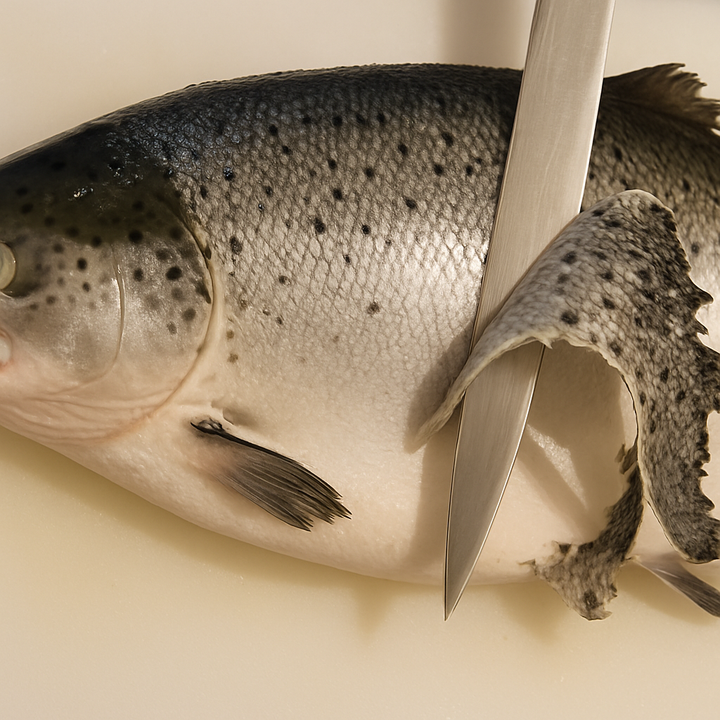Yuzu Farming: How This Luxury Citrus Is Grown and Harvested
Discover the demanding world of yuzu cultivation, from its decade-long maturation process to meticulous grafting techniques and hand-harvesting traditions. This treasured Japanese citrus faces both thorny challenges and bright prospects as global demand grows.

In the misty mountains of Japan's Kochi Prefecture, farmers tend to trees bearing a peculiar citrus fruit that has captured the culinary world's imagination.
The yuzu—a small, aromatic fruit with an intensely fragrant rind—has become one of the world's most sought-after ingredients, commanding premium prices in markets across the globe.
But behind its meteoric rise in popularity lies a cultivation story marked by patience, tradition, and agricultural skill that few consumers ever glimpse.
The Golden Treasure of Japanese Agriculture

Yuzu (Citrus junos) originated in central China and Tibet before making its way to Japan over a millennium ago, where it found its ideal growing conditions in the country's temperate climate.
Today, Japan's Kochi Prefecture produces approximately 50% of the nation's yuzu crop, making it the undisputed heart of yuzu cultivation.
For many farmers in the region, yuzu isn't just a crop—it's part of their cultural identity. The particular combination of cool mountain air, abundant rainfall, and mineral-rich soil in Kochi gives the local yuzu its distinctive character.
This character is unmistakable: unlike lemons or limes, yuzu offers a complex aromatic profile that combines mandarin, grapefruit, and subtle floral notes that have made it indispensable in both traditional and contemporary cuisine.
A Decade of Patience
What many admirers of this aromatic citrus don't realize is the extraordinary timeline required to bring a yuzu tree into production.
While many commercial citrus varieties bear fruit within 3-5 years, yuzu demands significantly more patience.
Agricultural research shows that a yuzu tree requires between 8 to 10 years before reaching full production.
This extended maturation period represents one of the biggest challenges in yuzu cultivation and explains much of its premium pricing.
During these formative years, farmers meticulously prune and shape the trees, establishing the foundation for decades of production.
Once mature, a healthy yuzu tree can produce fruit for up to 40 years, with peak harvests yielding approximately 20-30 kg (44-66 pounds) of fruit annually per tree.
The Art of Grafting in Yuzu Cultivation
Commercial yuzu production relies primarily on grafting rather than seed propagation.
This technique involves attaching a cutting (scion) from a productive yuzu tree onto the rootstock of another citrus variety, typically trifoliate orange (Poncirus trifoliata).
Japanese farmers prefer this rootstock for its cold hardiness and vigor.
Grafting preserves the parent tree's desirable characteristics while enhancing disease resistance.
The process, performed in early spring, requires precise alignment of the cambium layers and proper binding. Common methods include whip-and-tongue grafting for young rootstock and bark grafting for mature stock.
A successful graft union heals within weeks, though substantial growth takes months.
Beyond speeding up production, grafting ensures consistency in fruit quality—essential for premium yuzu in high-end culinary applications.
The Physical Challenge of Yuzu Farming
Perhaps the most immediate challenge faced by yuzu farmers is the tree's formidable defense system: exceptionally long, sharp thorns that can reach up to 5 cm (2 inches) in length.
Experienced yuzu farmers often bear thin white scars on their arms and hands—badges of honor in the yuzu farming community.
Even with protective gear, the thorns inevitably find vulnerable spots during pruning and harvesting work.
This thorny nature makes mechanical harvesting nearly impossible, meaning most yuzu is still picked by hand—a labor-intensive process that further contributes to its luxury status.
Farmers typically wear specialized padded gloves and thick clothing, moving carefully through the groves during harvest season.
Disease Management: The Ever-Present Threat
Yuzu, like all citrus crops, faces significant disease challenges, particularly citrus canker and citrus greening disease (Huanglongbing or HLB).
The latter has no cure, necessitating a zero-tolerance approach where infected trees must be completely removed and destroyed to prevent spread.
This practice is especially devastating for yuzu farmers, as each lost mature tree represents nearly a decade of cultivation.
The economic impact extends beyond immediate harvest losses, as farmers must restart the lengthy establishment process, facing years without income from affected areas—a risk factor reflected in yuzu's premium pricing.
Preventative strategies include regular inspections, optimal nutrition and irrigation, strategic orchard layout, and integrated pest management using beneficial insects to naturally control disease vectors.
The Harvest Ritual
Yuzu harvesting follows specific seasonal patterns tied to the fruit's culinary uses.
Green, unripe yuzu is harvested in early autumn (September-October) for its pronounced acidity, while the main harvest occurs between November and December when fruits turn golden yellow.
This timing aligns with the winter solstice when Japanese tradition includes yuzu-yu, the practice of bathing with yuzu to ward off illness.
During harvest, the orchards' powerful fragrance permeates the surrounding area. Harvesters work from dawn, carefully hand-picking each fruit to protect both tree and fruit.
Premium yuzu receives especially gentle handling to preserve the oil-rich outer rind—the most valued component for culinary applications.
Global Ambitions: Yuzu Beyond Japan
While Japan remains the spiritual home of yuzu cultivation, the fruit's global popularity has inspired cultivation efforts worldwide.
Spain, Italy, Australia, and parts of the United States (particularly California) have established small but growing yuzu industries.
Agricultural studies have shown that replicating the specific qualities of Japanese yuzu has proven challenging. Terroir matters enormously with this fruit—the same cultivar grown in different regions produces noticeably different aromatic compounds.
These international cultivation efforts face additional regulatory hurdles. Until relatively recently, fresh yuzu imports were restricted in many countries due to citrus quarantine concerns, further elevating the fruit's exclusive status.
The Future of Yuzu Farming

Despite growing global popularity, yuzu cultivation in Japan faces substantial challenges from an aging farmer population (averaging over 65 years in Kochi Prefecture), rural depopulation, and climate change impacts on traditional methods.
In response, some regions have developed agritourism initiatives where visitors participate in harvests, while others have formed cooperatives to create shelf-stable products like juices and essential oils, providing year-round income from a seasonal crop.
For consumers encountering fresh yuzu, appreciating its journey from seed to market enriches the experience.
Each fruit embodies not merely a culinary luxury but a living agricultural tradition—increasingly precious in our modern food system.
As yuzu's unique qualities gain recognition worldwide, this acknowledgment validates the decades of patience and craft invested by dedicated farmers.


